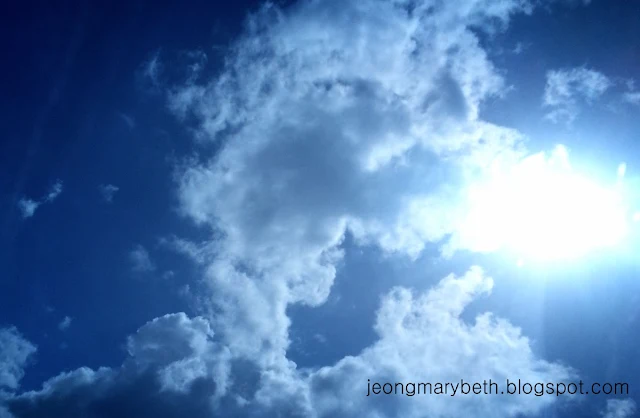레이저의 원리(Principles of Lasers)
빛의 본질 [정종영]
 |
사진. 빛의 본질은 무엇일까?
|
레이저의 구조와 원리
제1장. 레이저의 역사
제3장. 레이저의 원리
6. 레이저
💁💁💁
기원전 그리스의 철학자 Pythagoras, Democritus, Empedocles, Plato, Aristotle 등은 빛의 본질에 관한 여러 이론을 생각해 냈다. 특히 물질의 원자설 주장으로 유명한 그리스의 철학자 Democritus는 빛은 여러 가지 색을 가진 작은 입자들이라고 생각하였다. 1678년 Huygens는 빛을 물결치는 매질로 생각하여 파동설을 주장하였지만, 1704년 Newton이 입자설을 지지함으로써 오랫동안 빛은 입자라고 인정되었었다.
그러나 1801년 Young이 빛의 간섭 현상을 이중 슬릿 실험으로 발견, 다시 빛의 파동설이 과학적 근거를 갖게 되면서 빛의 입자설과 파동설이 대등하게 양립하게 되었다. 빛의 파동설이 점차 지지를 받게 되자, 이 분야의 과학자들은 우주 공간에 빛의 파동을 전달하는 매질로 에테르(Ether)를 가정하였으나, Michelson-Morley 실험의 결과 빛의 진행은 이와 무관한 것으로 알려지게 되었다.
1864년 Maxwell은 역학에 포함되지 않는 새로운 전자기 이론을 완성, 빛도 본질적으로 매우 파장이 짧은 전자기파로 생각하였다. 그러나 20세기가 되기 전에 파동으로 설명 안 되는 새로운 실험결과들이 발표되어 빛의 본성에 대한 이해는 또 벽에 부딪히게 되었다. 즉, 물체가 가열될 때 내는 빛의 색 분포(흑체복사)와 빛을 받은 금속이 방출하는 전자의 에너지 분포(광전효과)에 대한 실험은 빛에 대한 전혀 새로운 성질이었다.
1900년 Planck는 물체가 내거나 받아들이는 빛의 에너지는 진동수에 비례하는 에너지 값의 배수라고 하는 제안을 하여 흑체복사에 대해 해석을 하였고, 1905년 Einstein은 과감하게 빛을 입자로 보는 광양자 가설을 제기하고 바로 운동량과 에너지가 파장과 진동수에 의존한다는 제안을 하여 광전효과를 설명할 수 있었다. 하지만 Einstein의 광양자 가설이 나올 당시 그의 주장은 과학자 공동체 내에서 볼 때는 매우 과격한 것이었기 때문에 아인슈타인의 주장이 그대로 받아들여 지기 힘들었다. 무엇보다도 아인슈타인의 광양자 가설은 빛의 회절과 간섭 현상을 설명하는 데 문제가 있었다. 그러므로 1911년 Einstein은 광양자 가설을 부분적으로 유보하고 빛에 대한 파동론적인 해석을 부분적으로 수용했다. 1911년부터 1916년까지 그는 골칫덩어리였던 양자론보다는 중력에 대한 문제에 온 힘을 기울이게 되었고, 이에 따라 광양자 가설에 대한 그의 논의는 잠시 수면 아래로 잠기게 된다.
1916년 새로운 중력 이론인 ’일반 상대성 이론‘의 대업을 완성한 Einstein은 자신이 상대성 이론에 몰두하느라고 등한시했던 양자론에 관한 논의를 재개하였다. Einstein은 1911년에 자신이 가졌던 광양자의 존재에 대한 회의를 딛고 일어서서 다시금 광양자 가설을 과거보다 더욱 강력하게 주장하기 시작했다. 1916년 Einstein은 요즈음 레이저의 원리를 설명할 때 항상 등장하는 자연방출과 유도방출에 관한 논의를 전개하면서, 결론 부분에서 광양자 존재의 필요성을 다시금 거론했다.
하지만 그 후 오늘날까지 빛의 본성에 대해서는 순수한 입자도 아니고 순수한 파동도 아닌 두 가지 성질을 함께 갖는 존재로 이해되어 오고 있다. 여기서 한 가지 주목해야 할 것은 빛뿐만 아니라, 이후에 발견되는 모든 다른 소립자들도 파동과 입자의 이중성을 함께 지닌 존재임이 밝혀지고 있다. 그러나 과연 빛이란 무엇이며, 궁극적으로 무엇으로 어떻게 구성되어 있는지 아직도 물리학에서는 명확히 규명되지 아니한 미스테리인 것이다.
참고문헌
1. 임경순. 현대 물리학의 선구자. 다산출판사 2001: 73-122.
2. 석현정, 최철희, 박용근. 빛의 공학 – 색채 공학으로 밝히는 빛의 비밀. ㈜사이언스북스 2013: 12-6.
*1. Einstein A. Über einen die Erzeugung und Verwandlung des Lichtes betreffenden heuristischen Gesichtspunkt (On a Heuristic Viewpoint Concerning the Production and Transformation of Light). Annalen der Physik 1905; 17 (6): 132–48.
*2. Einstein A. On the Motion – Required by the Molecular Kinetic Theory of Heat – of Small Particles Suspended in a Stationary Liquid. Annalen der Physik 1905; 17 (8): 549–60.
*3. Einstein A. On the Electrodynamics of Moving Bodies. Annalen der Physik 1905; 17 (10): 891–921.
*4. Einstein A. Does the Inertia of a Body Depend Upon Its Energy Content? Annalen der Physik 1905; 18 (13): 639–41.
*5. Einstein A. Strahlungs-emission und -absorption nach der Quantentheorie. Verhandlungen der Deutschen Physikalischen Gesellschaft 1916; 18: 318-23.
*6. Einstein A. Zur Quantentheorie der Strahlung. Physikalische Gesellschaft Zürich 1916; 18: 47-62.
*7. Einstein A. Zur Quantentheorie der Strahlung. Physikalische Zeitschrift 1917; 18: 121-8.
*8. Hecht E. Optics. 4th Edition. Pearson Education 2002: 1-11.
*9. Huygens C.Traitė de la Lumiere. LeIden, Pierre van der Aa 1690: 1-180. (Although composed in 1678, this treatise was not published until 1690.
*10. Loudon R. The quantum theory of light. 3rd edition. Oxford University Press 2000; 177-8.
*11. Maxwell JC. A dynamical theory of the electromagnetic field. Philosophical Transactions of the Royal Society of London 1865; 155: 459–512. (This article accompanied an 8 December 1864 presentation by Maxwell to the Royal Society.)
*12. Michelson AA, Morley EW. On the Relative Motion of the Earth and the Luminiferous Ether. American Journal of Science 1887; 34: 333-45.
*13. Newton I. Opticks. 1st edition. London: Sam. Smith and Benj. Walford. 1704: 124.
*14. Planck M. Über eine Verbesserung der Wienschen Spektralgleichung[On an Improvement of Wien's Equation for the Spectrum]. Verhandlungen der Deutschen Physikalischen Gesellschaft 1900; 2: 202–4.
*15. Planck M. Zur Theorie des Gesetzes der Energieverteilung im Normalspektrum[On the Theory of the Energy Distribution Law of the Normal Spectrum]. Verhandlungen der Deutschen Physikalischen Gesellschaft 1900; 2: 237.
*16. Planck M. Entropie und Temperatur strahlender Wärme[Entropy and Temperature of Radiant Heat]. Annalen der Physik 1900; 306 (4): 719–37.
*17. Planck M. Über irreversible Strahlungsvorgänge[On Irreversible Radiation Processes]. Annalen der Physik 1900; 306 (1): 69–122.
*18. Sabra AI. Theories of Light, from Descartes to Newton. Cambridge University Press 1981: 198-250.
*19. Wen XG. Origin of gauge bosons from strong quantum correlations. Phys Rev Lett 2001; 88: 011602.
*20. Young T. Outlines of experiments and enquiries respecting sound and light. Philosophical Transactions of the Royal Society of London 1800; 90 (Part I): 106-50.
*21. Young T. On the mechanism of the eye. Philosophical Transactions of the Royal Society of London 1801; 91 (Part I): 23-88.
*22. Young T. An account of some cases of the production of colours, not hitherto described. Philosophical Transactions of the Royal Society of London 1802; 92 (PartII): 387-97.
*23. Young T. On the theory of lights and colours. Philosophical Transactions of the Royal Society of London 1802; 92 (Part I): 12–48.
*24. Young T. The Bakerian lecture Experiments and calculations relative to physical optics(1. Experimental Demonstration of the General Law of the Interference of Light). Philosophical Transactions of the Royal Society of London 1804; 94 (PartI): 1–16.


댓글 없음:
댓글 쓰기